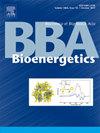聚焦蛋白质组学:迈向基于高通量单克隆抗体的线粒体疾病诊断蛋白质分辨率。
IF 3.4
2区 生物学
Q2 BIOCHEMISTRY & MOLECULAR BIOLOGY
引用次数: 0
摘要
针对氧化磷酸化链(OXPHOS)蛋白和其他线粒体成分的单克隆抗体(mab)的可用性有助于线粒体相关疾病的分析和最终诊断。针对五种复合物和丙酮酸脱氢酶(PDH)的单克隆抗体是快速和简单的免疫细胞化学方法的基础[Hanson, b.j., Capaldi, R.A, Marusich, M.F.和Sherwood, s.w., J. Histochem]。细胞化学,50(2002)1281-1288]。该方法可用于检测复合物在线粒体疾病中是否由于核编码基因(如Leigh氏病)或线粒体编码基因(如MELAS)的突变而改变了组装。最近已经获得了其他单克隆抗体,可以从非常少量的组织(如从细胞培养或患者穿刺活检中获得的组织)中免疫捕获五种OXPHOS复合物、PDH和腺嘌呤核苷酸转位酶(ANT)。当适应96孔板格式时,这些单克隆抗体允许单独测量每个线粒体成分的特定活性,并分析其亚基组成和翻译后修饰状态。免疫捕获方案不仅可用于分析遗传性线粒体疾病,还可用于评估和最终诊断迟发性线粒体疾病,包括帕金森病、阿尔茨海默病和迟发性糖尿病,这些疾病被认为是由线粒体蛋白(如OXPHOS链)的累积氧化损伤引起的。本文章由计算机程序翻译,如有差异,请以英文原文为准。
Focused proteomics: towards a high throughput monoclonal antibody-based resolution of proteins for diagnosis of mitochondrial diseases
The availability of monoclonal antibodies (mAbs) against the proteins of the oxidative phosphorylation chain (OXPHOS) and other mitochondrial components facilitates the analysis and ultimately the diagnosis of mitochondrially related diseases. mAbs against each of the five complexes and pyruvate dehydrogenase (PDH) are the basis of a rapid and simple immunocytochemical approach [Hanson, B.J., Capaldi, R.A., Marusich, M.F. and Sherwood, S.W., J. Histochem. Cytochem. 50 (2002) 1281–1288]. This approach can be used to detect if complexes have altered assembly in mitochondrial disease due to mutations in nuclear encoded genes, such as in Leigh's disease, or in mitochondrially encoded genes, e.g., MELAS. Other mAbs have recently been obtained that can immunocapture each of the five OXPHOS complexes, PDH and the adenine nucleotide translocase (ANT) from very small amounts of tissue such as that obtained from cell culture or needle biopsies from patients. When adapted to a 96-well plate format, these mAbs allow measurement of the specific activity of each of the mitochondrial components individually and analysis of their subunit composition and state of posttranslational modification. The immunocapture protocol should be useful not only in the analysis of genetic mitochondrial diseases but also in evaluating and ultimately diagnosing late-onset mitochondrial disorders including Parkinson's disease, Alzheimer's disease, and late-onset diabetes, which are thought to result from accumulated oxidative damage to mitochondrial proteins such as the OXPHOS chain.
求助全文
通过发布文献求助,成功后即可免费获取论文全文。
去求助
来源期刊

Biochimica et Biophysica Acta-Bioenergetics
生物-生化与分子生物学
CiteScore
9.50
自引率
7.00%
发文量
363
审稿时长
92 days
期刊介绍:
BBA Bioenergetics covers the area of biological membranes involved in energy transfer and conversion. In particular, it focuses on the structures obtained by X-ray crystallography and other approaches, and molecular mechanisms of the components of photosynthesis, mitochondrial and bacterial respiration, oxidative phosphorylation, motility and transport. It spans applications of structural biology, molecular modeling, spectroscopy and biophysics in these systems, through bioenergetic aspects of mitochondrial biology including biomedicine aspects of energy metabolism in mitochondrial disorders, neurodegenerative diseases like Parkinson''s and Alzheimer''s, aging, diabetes and even cancer.
 求助内容:
求助内容: 应助结果提醒方式:
应助结果提醒方式:


